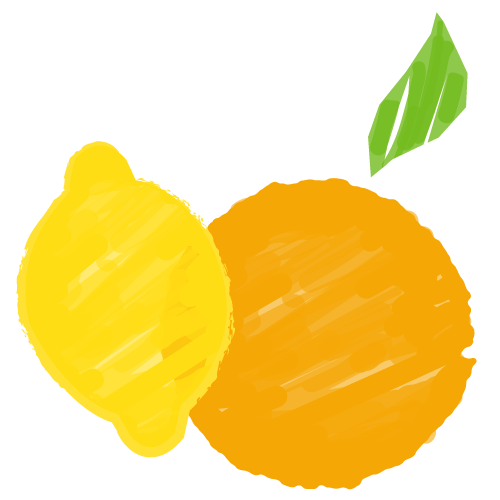Tips On Selecting Produce
Growing up, many of us were lucky enough to have a parent or grandparent teach us how to pick the ripest melon or the best-tasting tomato from a crowded bin of produce. Occasionally, however, those helpful pointers turn hazy: Should I choose the fruit that's tender or firm? The vegetable that's big or small?
The following information can help you make the best selections. While each fruit and vegetable has its own marks of ripeness and good flavor, your senses are truly your best guide. Shop by touch, smell and sight, and you're sure to take home the best offerings.
Fruits
Apples – They should have taut skin and be very firm when gently pressed. Avoid those with soft spots or punctures. Flavor and texture vary among varieties.
Avocados – Look for Hass, with bumpy, dark-green to almost-black skin. When ripe, they will give to gentle pressure. If you buy a firm one, store it in a paper bag at room temperature to ripen.
Bananas – Choose bananas with slight green on the stem and top. They should be firm and without bruises.
Berries – Watch out for mold and mush. Strawberries should be fragrant, shiny, firm and not too big; stems should be green. Blueberries should be firm with no green or red areas. Raspberries should be full and just soft, but not oozing juice.
Grapes – Choose grapes that have a plump consistency, are free from surface wrinkles with intact skin, without any cuts or cracks or leaking juice, and firmly attached to a healthy-looking green stem. Buy exactly ripe berries; green grapes should feature slight yellowish hue; red types should be mostly pinkish-red, while purple and blue-black types should be profound and rich in color.
Grapefruit and Oranges – Look for ones that are heavy for their size. When choosing navel oranges, avoid bruises and soft spots. For juice oranges and grapefruit, pick those with taut, shiny skin. You should be able to feel sections through skin.
Lemons and Limes – These should be not much more than 3 inches from tip to stem. Pick ones that are heavy for their size and have taut, thin skin; avoid those with very hard skin. they should give slightly when pressed.
Melons – Look for those that are fragrant and heavy. Press the end opposite the stem to feel a bit of give. For watermelon, avoid those with flat sides.
Pears – Choose ones that are fragrant, with no soft spots, punctures or bruises. They should give slightly when gently pressed; those with less give can be ripened at room temperature. (Buy Bosc very firm.)
Stone Fruits – These should be fragrant, with taut skin. Avoid those with wrinkles and bruises. They should have some give when gently pressed; handle carefully. Leave firmer ones at room temperature to ripen.
Tomatoes – Choose tomatoes with bright, shinny skins and firm flesh. Greenish coloring at the stem is okay on heirloom tomatoes. Store at room temperature and away from direct sunlight.
Vegetables
Asparagus – Thickness is a matter of taste. Choose bunches with tightly closed tips. Stalks should be bright green and firm. Avoid those with stalks that are flattened or wrinkled and feel hollow.
Beans – For pole beans, pick those that are bright, firm, with no soft spots or wrinkles. They should snap when bent and have very small beans. Avoid tough skin. For shell beans, the pods should be a bit leathery but firm with no yellowing. Beans should be easily felt through the pod.
Corn – It's best when served the day you buy it (refrigerate until ready to cook). Look for tight, bright-green husks and flowing, moist silk (golden brown is OK; dark brown is not). Pull back husk; kernels should be shiny, plump, firm and tightly packed.
Cucumbers – Buy firm, unwaxed Kirbys with variated color from light to dark green, and without wrinkles or soft spots; they should not be more than 6 inches long. (If Kirbys are unavailable, buy English.)
Eggplant – Flesh should be firm. Skin should be shiny, not shriveled or mottled. Stems should be green. Best used within a day or two.
Green Beans – Choose fresh, well-colored beans that snap easily when bent. Refrigerate green beans in a plastic bag and use within one week.
Mesclun and Lettuces – For mesclun, dig down into bin for freshest greens. There should be no wilted leaves or wet, mushy or yellow spots. For romaine, look for dark-green, narrow, stiff leaves. For butter lettuces, pick small, round, loosely formed heads.
Mushrooms – Choose well-shaped mushrooms with a firm texture. Avoid any mushrooms with spots or slime.
Onions – Look for dry, papery skins and flesh that is full and firm, especially at the stem end. Avoid any with mold, discoloration or soft spots, or ones in net bags.
Peppers – Bell peppers should be very firm with taut skin. Look for bright-green stems. Chiles should be vibrant and wrinkle free.
Potatoes – Buy those that are firm, without soft areas or wrinkled skin; avoid those with sprouting eyes, slits or a green tinge. Choose individually.
Summer Squash – For yellow and green, choose those that are small to medium, 5 to 6 inches and not bulbous (large ones are watery or fibrous). They should feel firm. Skin should be smooth and shiny. Pattypan should be no bigger than 4 inches across.


